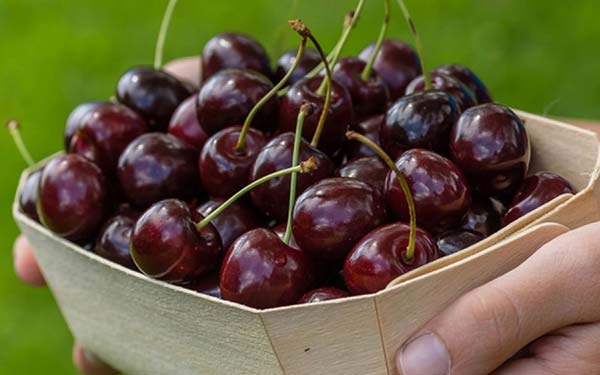Description and subtleties of caring for cherries of the Bessey variety
Content
Description of the variety
Besseya is a small shrub in height. The height of an adult plant, as a rule, does not exceed 1.5 m. Until the age of seven, the branches of the bush have a reddish-brown tint and are erect. In the future, the color changes and acquires a dark gray tint, and the branches spread along the ground.
The foliage looks like willow. The shape of the leaves is elongated and flattened. The green color has a subtle silvery tint. With the onset of autumn, it changes to red and the tree acquires a bright color.
The first crop can be harvested in the second year after planting. The average effective yield for this shrub is 14 years. After that, the number of fruits decreases.
With a small growth of the shrub, the berries are quite large (the average weight is 2.5 g). The dark brown color is intense, often with a black tint. Through selection, scientists have managed to breed several varieties with green and yellow berries.
One of the characteristic differences in comparison with classic cherries is the absence of sourness in ripe fruits. They taste more like mountain ash and bird cherry - a little tart and sweet.
Video "Cherry varieties Besseya"
From this video you will learn about the features of the Bessey variety and how to grow such a cherry in your garden.
Bessei-based hybrids
The most suitable tree for crossing with Besseya is the plum. The resulting hybrid has a higher growth (about 2 m) and a good yield. The fruits of the hybrid resemble a plum in appearance and taste, but are smaller in size - the weight of the berry is 25 g.
It is necessary to plant crossed shrubs at a distance of 2.5–3 m from each other (for classic Bessey, 2 m is enough). In the immediate vicinity of them, it is necessary to provide for several more varieties. In this case, the hybrids will receive the pollination necessary to obtain the crop. In this case, the sandy cherry of Bessey itself can act as a pollinator.
In the future, for reproduction, it is necessary to use horizontal layers of the lower branches. The use of seeds from berries is not used, since in this case the general properties of the plant are lost and the signs of only one of the varieties remain.
Nuances of agricultural technology
You can plant Bessey in any soil, although there are more preferred options. Best of all, the shrub, like its predecessor, the sand cherry, takes root in sandy soil. Crushed stone or pebbles will prepare heavy soil for planting. To loosen clay soil under Bessey, it is necessary to add sand to it. It is recommended when choosing a landing site to give preference to elevated areas on the sunny side.
Planting and care rules for Bessei are similar to those set for classic cherries. If the root system of a shrub is open when buying a seedling, it must be planted in the spring. For closed roots (in a container), the planting of Bessey cherries in early autumn is characteristic. When a large amount of snow falls in winter, it is necessary to carefully clear the shrub from it with the help of agricultural technology.
Advantages and disadvantages of the variety
Choosing Bessey for planting on the site, gardeners, as a rule, are guided by the following considerations:
- attractive decorative characteristics;
- immunity to pests, diseases and phyto-infections;
- unpretentious care;
- lack of root growth, as in the case of the felt variety;
- immunity to climatic changes.
The main disadvantage of the variety, according to reviews of summer residents and gardeners, is the tart taste of the fruit, which not everyone likes. It is quite easy to reduce it - it is necessary to pick the berries not immediately, but some time after they have fully ripened.
Gardeners reviews
Tamara Petrovna, 67 years old: “They put Besseya for a granddaughter. She does not like ordinary cherries because of the acidity. Luckily, she liked the berries, although everyone else complains of excessive astringency. But in compotes it is almost not felt ”.
Lida, 42 years old: “I can't spend a lot of time at the dacha because of my busy work schedule. As a result, the garden looks more wild than well-kept. A few years after planting, Bessei noticed that the taste and shape of the berries near the neighboring plum had changed. It’s even interesting what happens next. ”




